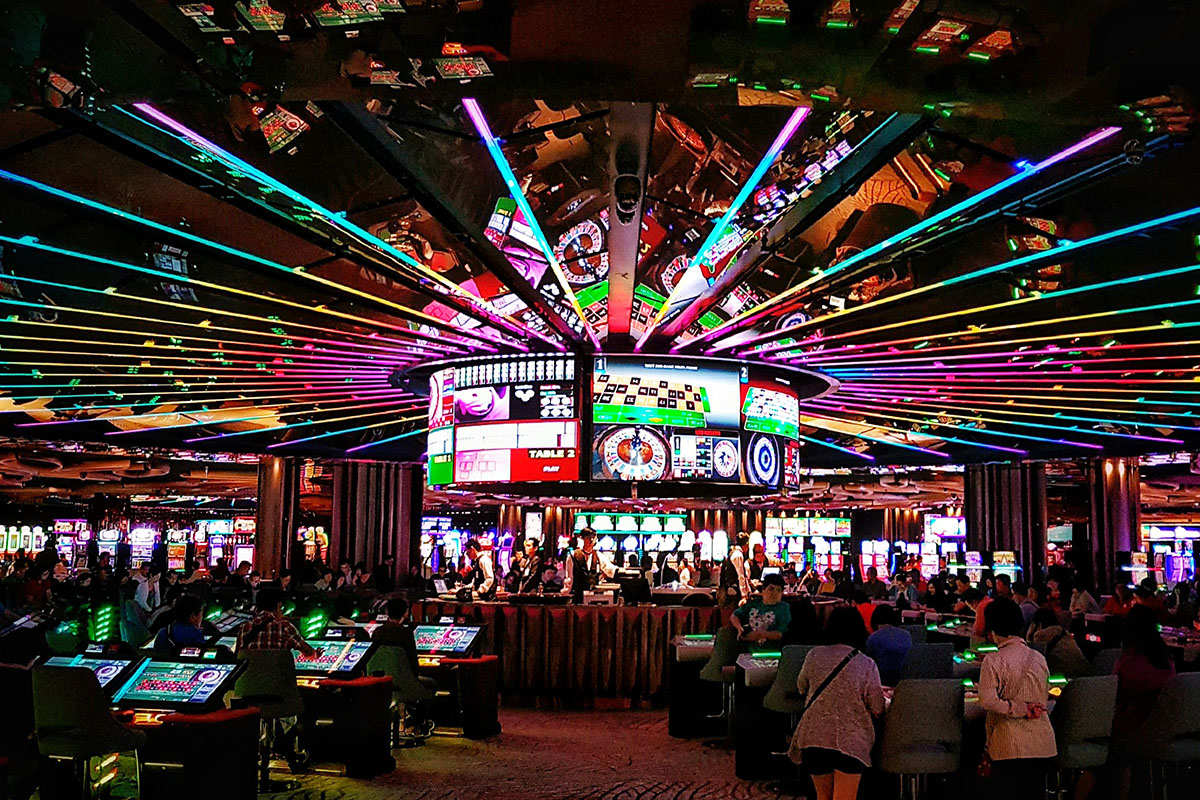
This world of casino gaming has experienced a remarkable transformation in recent times, driven by tech progress and shifting player preferences. As more players turn to digital mediums for leisure, traditional casino games are being increasingly modified to satisfy the needs of a technology-oriented consumer base. This transition not only involves the shift from brick-and-mortar to virtual environments but also covers the development of gameplay mechanics and player engagement techniques. non GamStop casinos
In this new virtual age, video game developers are leveraging innovative technologies to develop engaging experiences that resonate with a diverse range of players. From online fruit machines with stunning visuals to dynamic table activities that mimic the feel of a live gambling hall, the adaptation process is redefining how we perceive and enjoy casino games. As we explore this fascinating process, it is evident that the prospect of gambling lies in the seamless integration of advanced technology with the timeless allure of chance and tactics.
A Progression of Casino Games
Gambling games have gone through significant changes throughout the years, showing shifts in tech, culture, and gamer choices. In early times, basic activities of chance were played using rudimentary items such as rocks and bones. As societies progressed, so did the sophistication of these activities. The introduction of card games in the Middle Ages marked a key moment, leading to the development of popular games like Texas Hold’em and 21, which are continuously enjoyed in the present. Over the centuries, the design of casinos has also transformed, shifting from small local venues to expansive, ornate establishments.
The 20th century brought about a change in the world of casino entertainment with the advent of digital gaming. Slot machines appeared as a favored draw, engaging gamblers with their vibrant lights and audio effects. This era also saw the emergence of casino resorts, which integrated high-end accommodations with a diverse array of gaming options. The launch of video gaming further expanded the landscape, allowing for more intricate designs and gaming mechanics. These innovations not only attracted a broader audience but also altered the way gambling games were experienced.
With the rise of the internet in the late 90s and beginning 2000, casino entertainment entered a new digital phase. Online casinos emerged, providing participants with the convenience of gaming from their homes. This shift required gaming developers to reconsider traditional mechanics and adapt them for an interactive digital environment. Today, advancements in tech, including smartphone gaming and VR, persist to shape the evolution of gambling games, creating engaging experiences that captivate players like not before.
Primary Attributes of Virtual Casino Experiences
Virtual gambling experiences have transformed the way participants engage with gaming by providing captivating experiences that replicate the thrill of brick-and-mortar casinos. One of the most important features is the integration of top-notch graphics and animations, resulting in a visually stunning captivating environment. Designers focus on offering authentic themes and engaging storylines that pull players into the game, boosting their overall experience. The capability to offer 3D visuals and spectacular sound effects means that players can experience a vibrant atmosphere comparable to what they would encounter on a casino floor.
Another essential aspect of virtual casino experiences is the accessibility they offer to users worldwide. Digital platforms enable individuals to play their preferred games from the comfort of their own houses or on the go through portable devices. This comfort is accompanied by a broad range of gaming alternatives, including slot machines, table games, and live dealer experiences. Players no longer need to commute to a casino to enjoy their beloved betting experiences, allowing a larger audience to engage with casino games.
Lastly, online casino games frequently include creative features such as engaging gameplay and social elements. Many games now allow players to compete against one another, join tournaments, or even post their achievements on social media. This shift encourages a sense of belonging among players while promoting friendly competition. Additionally, features like customizable avatars and in-game chat options boost engagement, making the digital gaming experience even more thrilling for all users.
What Lies Ahead of Online Gaming
As technology continues to evolve, the landscape of online gaming is preparing for significant change. Virtual and augmented reality are creating a buzz, offering players an engaging adventure that mirrors the thrill of being in a physical casino. These advancements create opportunities for developers to introduce innovative game formats and dynamic elements, reshaping how players connect with their favorite casino games.
Moreover, the integration of artificial intelligence is enhancing user experiences and personalizing gameplay. AI can analyze player behavior, offer tailored game options, and improve customer support through automated assistants. This customization not only maintains players occupied but also helps build a loyal community around specific casino platforms, positioning them for success in a competitive market.
Ultimately, the rise of smartphone gaming is another key factor shaping the future of online gaming. With an ever-growing number of players enjoying casino games on their phones, developers are concentrating on optimizing their platforms for mobile use. This shift allows players to enjoy casino games anywhere, paving the way for a more flexible and approachable gaming environment that caters to a broader audience.
